
Photonics Letters of Poland
metrics 2024
Fostering Collaboration in Photonics Research
Introduction
Photonics Letters of Poland is a prominent journal dedicated to the field of photonics, published by the Photonics Society of Poland. With an ISSN of 2080-2242, the journal aims to foster knowledge and innovation within electronic, optical, and magnetic materials. Although it currently holds a Q4 classification in its category and is ranked in the 21st percentile, it serves as an essential platform for researchers and practitioners to share their findings and advancements. The journal covers a range of topics from foundational research to applied science, highlighting advancements in photonics technologies and their applications. Operating from Warsaw University of Technology, the journal promotes open access to knowledge while ensuring rigorous peer review standards. With its coverage spanning from 2009 to 2024, Photonics Letters of Poland represents a vital contribution to ongoing research within the field, making it indispensable for students, professionals, and academics looking to stay attuned to emerging trends and developments in photonics.
Metrics 2024
 0.20
0.20 0.50
0.50 0.50
0.50 18
18Metrics History
Rank 2024
Scopus
IF (Web Of Science)
JCI (Web Of Science)
Quartile History
Similar Journals
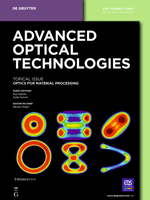
Advanced Optical Technologies
Shaping Tomorrow's Optical Technologies TodayAdvanced Optical Technologies is a reputable journal dedicated to advancing the field of optics and photonics, published by FRONTIERS MEDIA SA in Switzerland. Since its inception in 2012, the journal has made significant contributions to the domains of Atomic and Molecular Physics, Electronic, Optical and Magnetic Materials, and Instrumentation, achieving commendable rankings within these categories, including a Q2 quartile classification in 2023. With an emphasis on open access, Advanced Optical Technologies aims to facilitate the rapid dissemination of research findings, thereby fostering collaboration and innovation among researchers, professionals, and students alike. The journal serves as an essential platform for cutting-edge research articles, reviews, and technical notes, and its commitment to quality is reflected in its robust Scopus rankings. As the field of optical technologies continues to expand, this journal plays a crucial role in highlighting pivotal advancements and promoting interdisciplinary dialogue among scholars in the scientific community.

Photonics
Empowering Researchers in the Realm of PhotonicsPhotonics, an esteemed journal published by MDPI, is a leading platform for researchers in the fields of atomic and molecular physics, optics, and instrumentation. Since its inception in 2014, the journal has fostered open access to cutting-edge research, facilitating knowledge dissemination in these dynamic disciplines. With its Q2 ranking in the 2023 Scopus metrics for various categories, including radiology, nuclear medicine, and imaging, Photonics represents a crucial academic resource for professionals and students seeking to advance their understanding and expertise. Located in Basel, Switzerland, the journal plays a pivotal role in bridging theoretical and practical approaches to photonic technologies. Researchers are encouraged to contribute their findings, thereby enriching the journal’s impact and relevance in the global scientific community through collaboration and innovation.
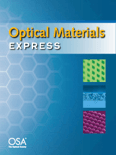
Optical Materials Express
Pioneering discoveries in the realm of optical materials.Optical Materials Express is a leading open-access journal dedicated to the rapid dissemination of research in the field of optical materials, published by the esteemed Optica Publishing Group. Since its inception in 2012, the journal has played a pivotal role in advancing knowledge and innovation in Electronic, Optical, and Magnetic Materials, currently maintaining a commendable Q2 classification in the 2023 category rankings. With a Scopus rank of 86 out of 284 in its category, the journal proudly boasts a 69th percentile positioning, underscoring its impact and relevance within the scientific community. The journal publishes high-quality, peer-reviewed articles that explore both fundamental and applied aspects of optical materials, making it an essential resource for researchers, professionals, and students alike. Located in Washington, DC, and accessible to a global audience, Optical Materials Express continues to foster collaboration and innovation among scholars in this vibrant field.
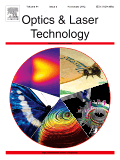
OPTICS AND LASER TECHNOLOGY
Connecting Theory and Practice in OpticsOPTICS AND LASER TECHNOLOGY, published by Elsevier Science Ltd, is a premier journal dedicated to advancing knowledge in the fields of optics and laser applications. With its impressive Q1 rankings across three critical categories—Atomic and Molecular Physics, and Optics; Electrical and Electronic Engineering; and Electronic, Optical and Magnetic Materials—the journal stands at the forefront of scientific discourse, boasting a significant impact factor that underscores its relevance. Since its inception in 1970, the journal has consistently provided a platform for the dissemination of cutting-edge research, key innovations, and reviews that influence both academic study and practical applications. Although it currently does not have open access options, its rigorous peer-review process and inclusion in esteemed indexing services make it a valuable resource for researchers, professionals, and students seeking to stay informed about the latest developments in optics and laser technology. The journal’s ongoing commitment to quality research ensures it remains a vital publication for those engaged in this dynamic field, with a converged projection extending through 2025.
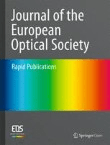
Journal of the European Optical Society-Rapid Publications
Driving Fast-Paced Research in PhotonicsJournal of the European Optical Society-Rapid Publications, with ISSN 1990-2573 and published by EDP Sciences S A, is a premier open access journal dedicated to advancing the field of optics and photonics since its inception in 2006. Based in France, this journal serves as a vibrant platform for researchers, professionals, and students to disseminate their findings quickly and efficiently. Achieving a commendable Q3 ranking in Atomic and Molecular Physics and Optics (2023), it reflects a growing impact within the scientific community, despite currently holding a 33rd percentile rank among similar publications in the realm of Physics and Astronomy. The journal fosters an environment of rapid communication and collaboration, making it an invaluable resource for those interested in the latest developments and innovations in optical sciences. With open access ensuring broad visibility for all published work, the Journal of the European Optical Society-Rapid Publications is positioned as a key contributor to enhancing the understanding and application of optical technologies.
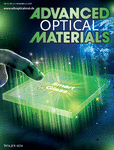
Advanced Optical Materials
Pioneering Developments in Electronic and Optical MaterialsAdvanced Optical Materials, published by WILEY-V C H VERLAG GMBH, stands as a premier journal within the fields of atomic and molecular physics, as well as electronic, optical, and magnetic materials. With a substantial impact factor reflecting its significance—ranking in the Q1 category among both Atomic and Molecular Physics and Electronic, Optical and Magnetic Materials—this journal offers a vital platform for disseminating groundbreaking research. The journal's Scopus rank positions it at an impressive 14th out of 224 in its category and 25th out of 284 in materials science, illustrating its commitment to advancing knowledge and innovation. Covering a diverse range of topics and trends from 2013 to 2024, Advanced Optical Materials is essential for researchers, professionals, and students who are exploring the cutting-edge developments in optical technologies. Despite not being open access, the journal provides high-quality peer-reviewed articles that contribute substantially to the academic community, helping to shape the future of materials research.

eLight
Fostering Innovation Through Cutting-Edge ResearcheLight is a leading academic journal published by SPRINGER NATURE, dedicated to the dynamic field of Atomic and Molecular Physics, as well as Electronic, Optical, and Magnetic Materials. Launched in 2021, the journal has quickly established itself as a reputable source of cutting-edge research, evidenced by its impressive Q1 quartile rankings in both categories for 2023, alongside remarkable Scopus rankings that place it in the top 2% of its fields. With a commitment to advancing knowledge and fostering innovation, eLight invites contributions from researchers, professionals, and students who are passionate about exploring new frontiers in these critical areas of study. Hitting a critical intersection of physics and materials science, the journal provides an open forum for the dissemination of experimental findings, theoretical studies, and application-based research, ensuring accessibility to vital discoveries that drive progress in technology and academia. Located in Singapore, eLight is poised to make significant contributions to the scientific community until at least 2024, and beyond.

Liquid Crystals Today
Navigating the Dynamic World of Liquid CrystalsLiquid Crystals Today, published by Taylor & Francis Ltd, is an essential platform for researchers and professionals focusing on the fascinating field of liquid crystals. With an ISSN of 1358-314X and an E-ISSN of 1464-5181, this journal covers significant advancements in areas such as Condensed Matter Physics, Inorganic Chemistry, and Materials Chemistry, reflected in its recent classification within the Q3 quartile across these categories. Established in 1991 and with a rich history of disseminating impactful research, the journal provides critical insights and discussions pertinent to the scientific community. Although it does not follow an open-access model, its rigorous peer-review process ensures high-quality publications that contribute to the body of knowledge in liquid crystals. Researchers looking to stay updated in this dynamic field will find Liquid Crystals Today an invaluable resource.

APPLIED OPTICS
Fostering Excellence in Optical ResearchApplied Optics, published by Optica Publishing Group, is a prestigious journal dedicated to the field of optics and photonics. With an ISSN of 1559-128X and an E-ISSN of 2155-3165, this journal serves as a critical platform for researchers, professionals, and students eager to disseminate innovative findings and advancements in applied optics. Established in 1962, it has maintained a significant presence in the academic community, currently holding a Q2 category ranking in various disciplines including Atomic and Molecular Physics, Electrical and Electronic Engineering, and Miscellaneous Engineering as per the 2023 metrics. The journal's reputation is underscored by its solid Scopus rankings, attesting to its influential research output. While not an open-access journal, it continues to offer vital insights and discussions on the latest research topics that are critical to the advancement of technologies in optics, ensuring accessibility to vital knowledge for those within the field.

OPTICA APPLICATA
Fostering Innovation in Optical EngineeringOPTICA APPLICATA, published by Wroclaw University of Science and Technology, is a crucial platform for advancing knowledge in the fields of Atomic and Molecular Physics and Optics. With an ISSN of 0078-5466 and an E-ISSN of 1899-7015, this journal serves as a vital resource for researchers, professionals, and students seeking to explore the latest developments and applications in optical science and engineering. Although currently categorized in the fourth quartile in both Atomic and Molecular Physics and Electronic, Optical and Magnetic Materials, its commitment to publishing high-quality research articles, reviews, and technical notes remains unwavering. The journal covers diverse topics from practical applications to theoretical insights and fosters a collaborative environment for global contributors. While it does not offer an open access option, the journal is accessible through university libraries and institutional subscriptions. With an eye towards bridging academic research with real-world applications, OPTICA APPLICATA is well-positioned to influence advancements in photonics and materials science through ongoing issues from 1988 to 2024.